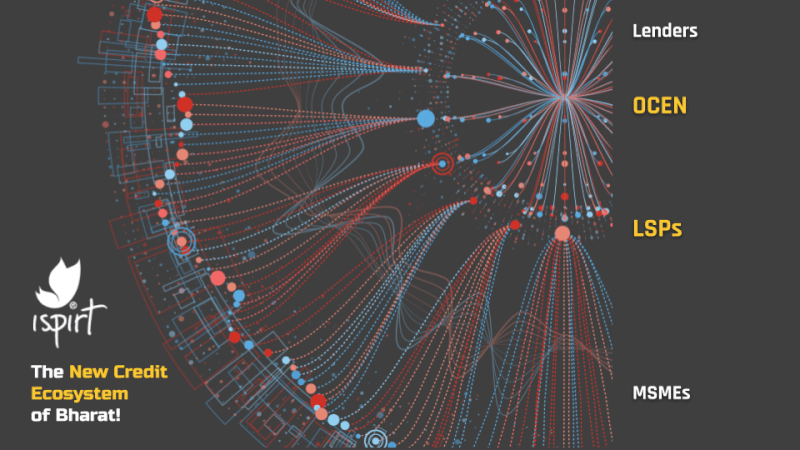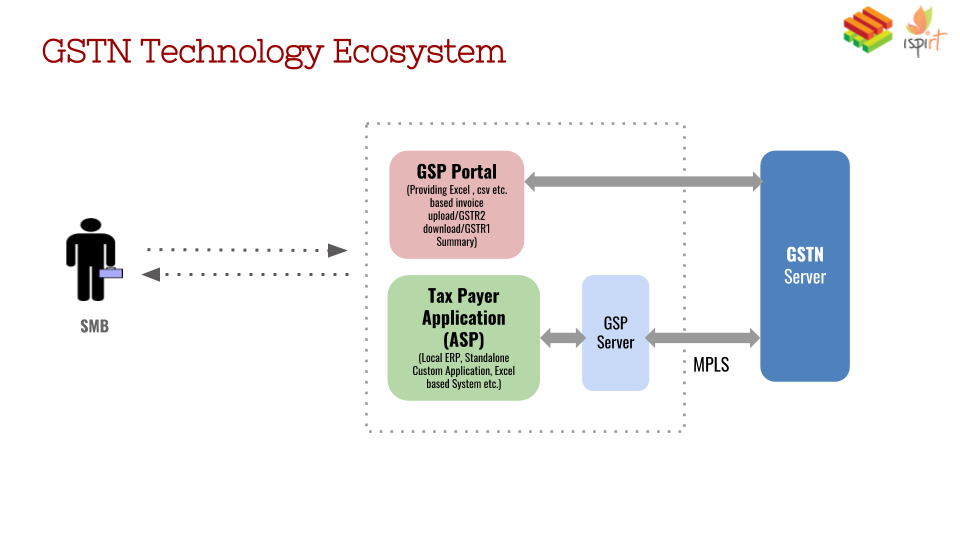On 31st July we hosted the second open house discussion on Open Credit Enablement Network (OCEN). This week’s session covered several potential Loan Service Provider (LSP) products and business cases, and answers to questions that came up following last week’s introductory presentation.
To recap, OCEN is a new paradigm for credit that seeks to provide a common language for lenders and marketplaces to build innovative, financial credit products at scale. OCEN seeks to reimagine the lending ecosystem so that any service provider that interfaces with consumers and MSMEs can become a Fintech-enabled credit marketplace, or more specifically, a Loan Service Provider.
The discussion this week centred around what kind of role LSPs could play in an OCEN-enabled cash flow lending value chain. OCEN APIs can enable lending products for both consumers and businesses, and for both capital and operating expenses. They are designed to allow for several different types of LSPs and financial products to flourish.
To build this new credit economy, we need to move from the ‘Lend and Forget’ mindset of traditional lenders to the holistic ‘Lend, Monitor and Collect’ model allowed by the myriad of service providers and marketplaces in our tech ecosystem. These platforms not only have insightful data into their user’s commercial activity but they have an ongoing interface and interaction with potential borrowers.
With OCEN standardisation, LSPs can improve and contribute to all the five aspects of lending i.e. acquisition, underwriting, ROI, collections and monitoring. Tailored credit products can be plugged in at every stage in a typical supply chain (from ‘Procurement to Pay’) to help ease liquidity concerns and ensure business continuity.
Our volunteers illustrated this with two examples:
1) A seller on the Government e-marketplace (GeM) obtaining invoice financing through the Sahay GeM LSP
2) A truck owner availing of Business-Vehicle Trip Financing through a logistics company performing the role of an LSP
OCEN is also enabling the creation of a new type of credit product that is digitally applied for and disbursed, where the end use of the loan is identified and paid for, and where repayment of the loan is enabled by the locking of incoming cash-flow.
Every participant in our fintech ecosystem is incentivised to take part in this new open credit economy enabled by OCEN. There is an opportunity here for lenders, service providers, aggregators and tech providers to all play their role in bridging India’s credit gap and giving our people and businesses the support they need.
The second session on OCEN covered the following topics broadly, and the entire webinar is also available on our official Youtube channel:
- By Siddharth Shetty
- An introduction to iSPIRT and our values
- By Ankit Singh
- Recap of what OCEN is, and how LSPs fit in to the framework
- Recap of Sahay, the reference app for OCEN (and the first LSP)
- Becoming an LSP (and the role of CredAll)
- By Nipun Kohli
- Examples of different cash-flow-lending products enabled by OCEN
- Key differences between traditional lending and credit products on OCEN
- How LSPs can participate across the lending value chain
- ‘Procurement to Pay’ credit products
- Product example 1: GeM – Procurement to Pay
- Product example 2: Business-Vehicle Trip Financing
- By Praveen Hari
- Building new credit products on OCEN
- The Type 4 loans
After the presentation our volunteers answered some questions from the community including:
– How is Sahay different from TReDS?
– How does the underwriting take place for LSP-enabled loans?
– How can risk be managed between the LSP and the lender?
We will be hosting weekly open house sessions to keep diving deeper into OCEN. The next such event will take place at 5 pm on 7 August 2020
Readers who wish to learn more about OCEN are encouraged to share this post and sign up now for the session below or click here.
As always, in order to successfully create a new credit ecosystem for Bharat it will take the collaborative effort of participants from every corner of our fintech ecosystem.
If you’re interested in participating as a:
- Loan Service Provider
- Lender
- Technology Service Provider
please drop us an email at [email protected]
Readers may also submit any questions about the OCEN to the same email address. We shall do our best to answer these questions during next Friday’s open house discussion.
If you would like to know more about becoming an LSP, please check out www.credall.org (CredAll is a collective of lending ecosystem players to drive cash flow based lending)
About the Author: The post is authored by Rahul Sanghi
Recommended Reading:
Chapter 7 and 8 in RBI UK Sinha MSME committee report: https://www.rbi.org.in/Scripts/PublicationReportDetails.aspx?UrlPage=&ID=924
Introduction to India Stack’s fourth layer – Data Empowerment & Protection Architecture: https://www.youtube.com/watch?v=mW__azI8_ow






